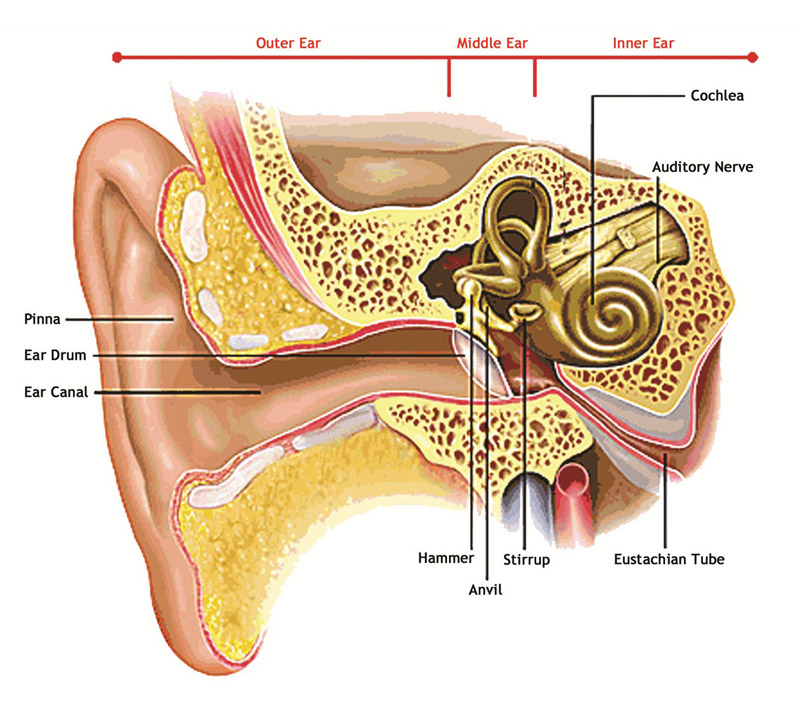
Decibels is a measurement of a power ratio relative to a specific reference value; in this context, the figures are all dB SPL (or Sound Pressure Level) which defines 0 dB as 20 µPa.
Just in case you have no idea what 20 micro Pascals are, it just so happens to be the quietest thing a healthy human ear can hear. In other words it represents the threshold of hearing and goes all the way up to 140 dB SPL (or 200 Pa), which is the threshold of pain (i.e., where sound is so loud that it becomes painful).
The best way to learn when levels become potentially harmful is to get a sound level meter and monitor accordingly. It’s important to keep in mind that phone apps providing this information are only accurate if they’ve been properly calibrated with the built-in microphone. There are even key rings with simple LED displays that can alert us to dangerous levels.
As a rough guide, an unamplified rock band can routinely generate 90 to 100 dB without breaking a sweat, and once the PA is cranked up they’ll sit quite comfortably in the 110 dB region. As a result, some form of protection is required, particularly if you want a long career.
There are a variety of ear plugs available that provide a range of attenuation (which is rarely equal at all frequencies). Expensive molded plugs generally provide a relatively flat frequency response while less expensive (“cheap”) ones made of memory foam tend to dramatically attenuate high frequencies.
If I’m not mixing or involved in a critical listening role, I’ll pop in generic foam plugs for maximum protection; otherwise I use different ear plugs at different times to limit my exposure. Don’t forget that risks exist outside of the live concert environment – just because you’re off duty doesn’t mean your ears are. I’ve worn ear plugs in cinemas, night clubs, karaoke bars, and even on loud subway trains.
How They’re Maintained
In addition to environmental factors that can affect the mechanism of hearing, there are also a host of medical complications.
Like any part of the body, ears are prone to infection. Otitis Externa and Otitis Media are infections of the outer and middle ear, respectively, which are easily treated with antibiotics and in some cases a spray. Otitis Externa (also known as swimmer’s ear) can also be caused by the use of dirty ear plugs so it’s important to keep them clean (or if they’re disposable change them often).
Also never insert things (i.e., thin cotton swabs a.k.a. Q-tips) to clean ears. Aside from the risk of damaging the ear drum, the removal of wax actually hampers the ear’s natural cleaning mechanism and you can push the wax towards the ear drum and cause troublesome build-ups. If in doubt about this or any other issues, always seek professional medical advice because if your ears are out of action for a period of time, then so are you.
Annual check-ups should also be an important part of your maintenance regime. They can prove invaluable in identifying issues and potential complications in advance of them becoming permanent, life-changing problems. When in doubt see an audiologist.
The bottom line is just how important hearing is to a long and prosperous career as a sound engineer and/or technician. Thankfully, ears are incredibly resilient and with proper care and attention, they’re usually capable of providing a lifetime of reliable service.
